Researchers at the University of Minnesota Twin Cities College of Science and Engineering have developed a new technique that reconstructs two dimensional (2D) radio images–visual representations created from radio waves–into three dimensional (3D) “Pseudo3D cubes” to help better understand objects in the Universe.
Tag: Galaxies
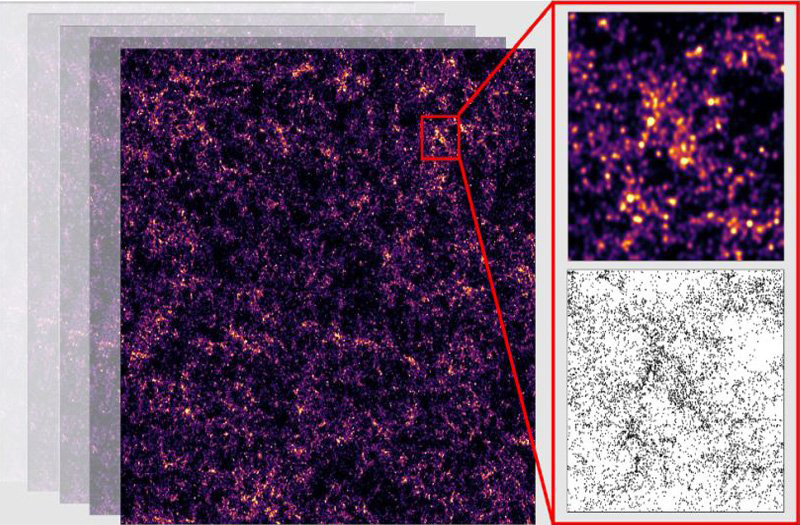
A New View of the In-Between Years of Our Universe
Just like we use photos to reflect on memories of our past, astrophysicists want to use images of far-off galaxies to understand what the universe was like in its juvenile years. But current imaging technology can only reach so far back in history — 90 to 95 percent of the volume of our 14-billion-year-old universe remains unseen.
DECam confirma que los vecindarios de los cuásares del Universo primitivo están realmente abarrotados
Observaciones realizadas con la Cámara de Energía Oscura (DECam, por sus siglas en inglés) confirman las expectativas de los astrónomos de que los cuásares del Universo primitivo se formaron en regiones del espacio densamente pobladas con galaxias compañeras. El enorme campo de visión de DECam y sus filtros especiales jugaron un papel fundamental para llegar a esta conclusión. Además, estas observaciones revelan la razón por la que los estudios previos que buscaban caracterizar la densidad de los vecindarios de los cuásares en el Universo primitivo arrojaban resultados contradictorios.
Magnifying Deep Space Through the “Carousel Lens”
A newly discovered cluster-scale strong gravitational lens, with a rare alignment of seven background lensed galaxies, provides a unique opportunity to study cosmology.
NASA’s Webb Reveals Distorted Galaxy Forming Cosmic Question Mark
Astronomers using NASA’s James Webb Space Telescope were surprised to find a distant, red galaxy distorted into the shape of a question mark. A specific, rarely-seen type of natural gravitational lens is causing the galaxy to appear multiple times.
NASA’s Roman Space Telescope to Investigate Galactic Fossils
The universe may seem static, only capable of being captured in still frames, but that is far from the truth. It is actually ever-changing, just not on timescales clearly visible to humans. NASA’s upcoming Roman Space Telescope will bridge this gap in time, opening the way to the dynamic universe.
A million light years and still going
In a breakthrough discovery that challenges the conventional understanding of cosmology, scientists at Case Western Reserve University have unearthed new evidence that could reshape our perception of the cosmos.
Galaxies Actively Forming in Early Universe Caught Feeding on Cold Gas
A team in Denmark examining archival data from the James Webb Space Telescope recently found a trio of distant galaxies that are in the process of gathering gas when the universe was only a few hundred million years old. Their detection and characterization are remarkable achievements that only Webb is currently capable of, thanks to its specialization in infrared light.
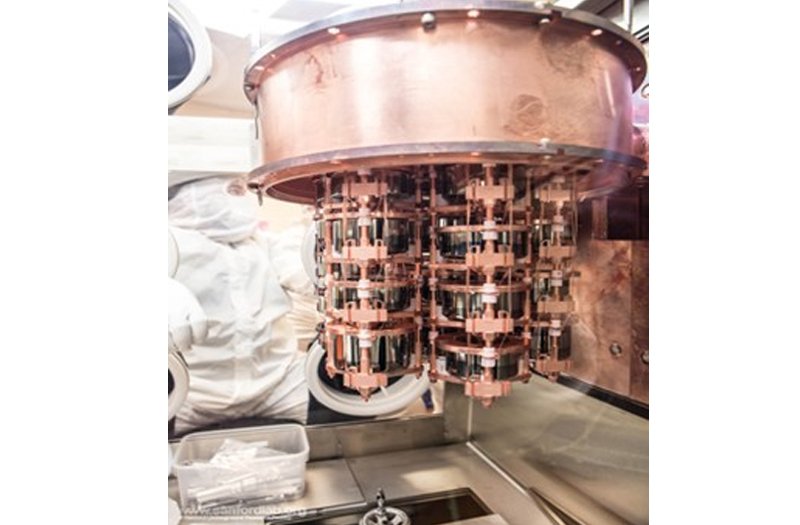
Expanding the Hunt for Hidden Dark Matter Particles
Theoretical models of dark matter predict that its signals can be detected using low-background radiation detectors. By looking for specific types of dark matter and finding no signal, scientists operating the Majorana Demonstrator experiment have significantly narrowed the characteristics of potential dark matter particles. The results will help design future experiments.
UC Irvine astronomers’ simulations support dark matter theory
Computer simulations by astronomers support the idea that dark matter – matter that no one has yet directly detected but which many physicists think must be there to explain several aspects of the observable universe – exists, according to the researchers, who include those at the University of California, Irvine.
Revelan detallada panorámica de 11 mil millones de años hacia el pasado del Universo
Astrónomos de diversas partes del mundo están realizando un análisis inicial de los datos del primer año de estudio del Instrumento Espectroscópico de Energía Oscura, que lleva a cabo un sondeo de 5 años para crear el mapa en 3D más grande que se haya hecho sobre el Universo. Utilizando el espectro de las galaxias cercanas y de cuásares distantes, los astrónomos reportaron que lograron medir la historia de la expansión del Universo con la mayor precisión jamás alcanzada, proporcionando un panorama sin precedentes sobre la naturaleza de la energía oscura y su efecto en la estructura a gran escala del Universo.
DESI Looks 11 Billion Years Into the Past to Reveal Most Detailed View Ever of the Expanding Universe
The Dark Energy Spectroscopic Instrument is conducting a five-year survey to create the largest 3D map of the Universe ever. Astronomers are now performing initial analysis of the survey’s first-year data. Using spectra of nearby galaxies and distant quasars, astronomers report that they have measured the expansion history of the Universe with the highest precision ever, providing an unprecedented look at the nature of dark energy and its effect on the Universe’s large-scale structure.
FAU Experts Available to Discuss Upcoming Solar Eclipse
Experts from Florida Atlantic University’s Charles E. Schmidt College of Science are available to discuss various aspects related to the upcoming solar eclipse.
Webb Unlocks Secrets of One of the Most Distant Galaxies Ever Seen
Delivering on its promise to transform our understanding of the early universe, the James Webb Space Telescope is probing galaxies near the dawn of time. One of these is the exceptionally luminous galaxy GN-z11, which existed when the universe was just a tiny fraction of its current age. One of the youngest and most distant galaxies ever observed, it is also one of the most enigmatic. Why is it so bright? Webb appears to have found the answer.
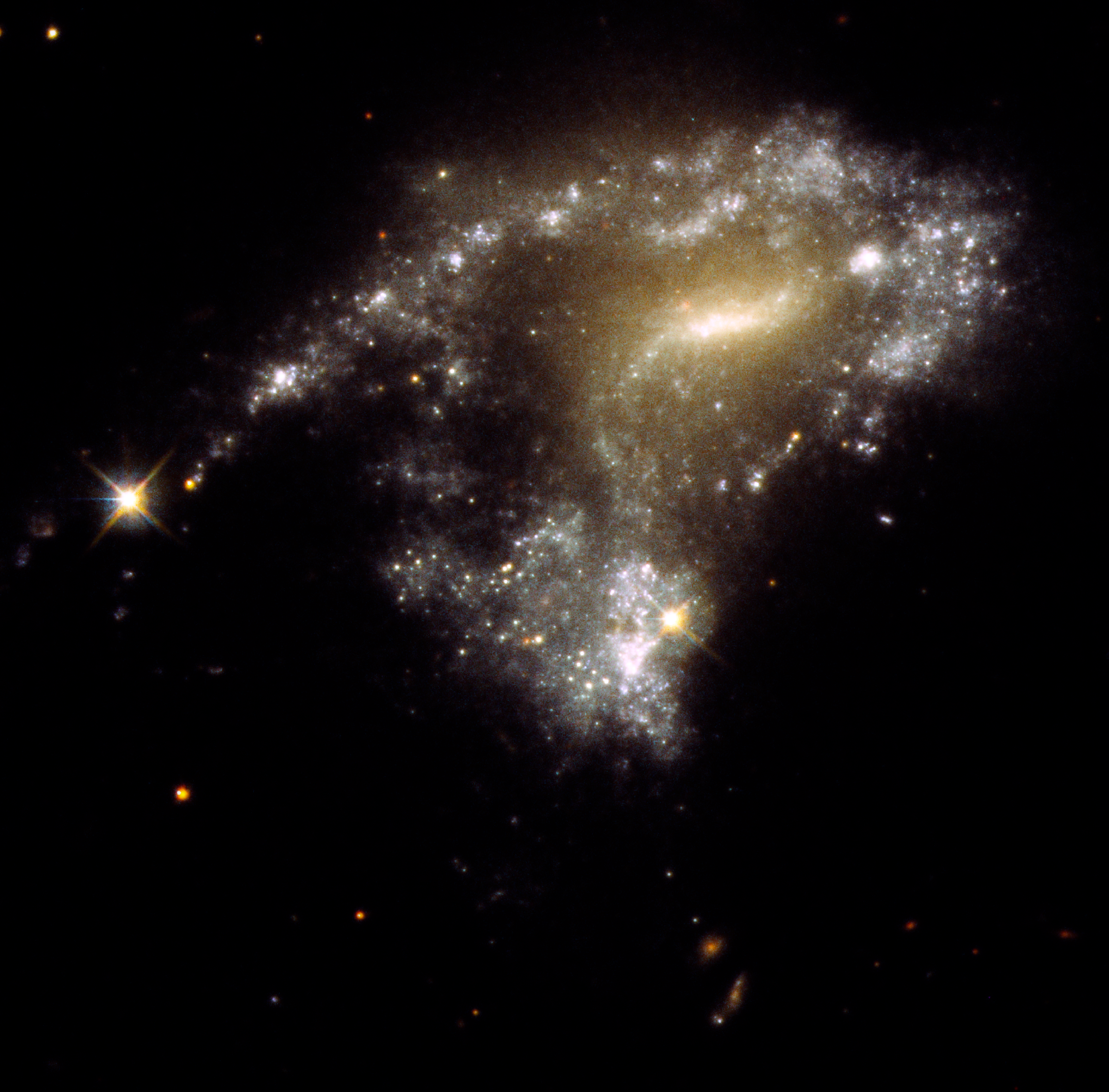
NASA’s Hubble Traces ‘String of Pearls’ Star Clusters in Galaxy Collisions
When galaxies go bump in the night, they cook-up new generations of stars that might otherwise have never been born. These close encounters between galaxies cause a gravitational tug-of-war.
New research shows quasars can be buried in their host galaxies
Quasars can be obscured by dense clouds of gas and dust in their host galaxies, not just by donut-shaped rings of dust in the close vicinity of the black hole.
Deep learning speeds up galactic calculations
A new way to simulate supernovae may help shed light on our cosmic origins
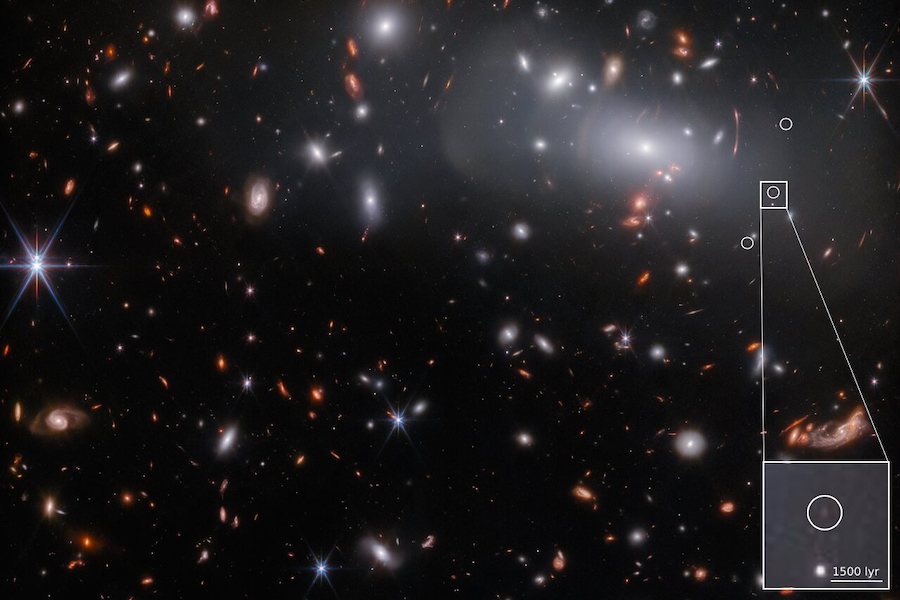
Researchers discover tiny galaxy with big star power using James Webb telescope
Using first-of-their-kind observations from the James Webb Space Telescope, a University of Minnesota Twin Cities-led team looked more than 13 billion years into the past to discover a unique, minuscule galaxy that could help astronomers learn more about galaxies that were present shortly after the Big Bang.
How cosmic winds transform galactic environments
Much like how wind plays a key role in life on Earth by sweeping seeds, pollen and more from one place to another, galactic winds – high-powered streams of charged particles and gases – can change the chemical make-up of the host galaxies they form in, simply by blowing in a specific direction.
Unveiling Networks of Stellar Nurseries in Nearby Galaxies
Janice Lee, Chief Scientist at the International Gemini Observatory, leads the JWST Treasury Survey for the PHANGS (Physics at High Angular resolution in Nearby Galaxies) collaboration to study how star formation affects the evolution of galaxies. These observations are providing new insights into how some of the smallest-scale processes in our Universe — the beginnings of star formation — impact the evolution of the largest objects in our cosmos: galaxies.

Old and new stars paint very different pictures of the Triangulum Galaxy
Scientists have discovered something unexpected about the Triangulum galaxy: In this satellite galaxy, a close companion of the much larger Andromeda galaxy, old and new stars occur in separate parts of the its structure, something not seen in galaxies like our own and so far not reporter for other satellite galaxies.
HUBBLE FINDS THAT GHOST LIGHT AMONG GALAXIES STRETCHES FAR BACK IN TIME
These are Hubble Space Telescope images of two massive clusters of galaxies. The artificially added blue color is translated from Hubble data that captured a phenomenon called intracluster light. This extremely faint glow traces a smooth distribution of light from wandering stars scattered across the cluster. Billions of years ago, the stars were shed from their parent galaxies and now drift through intergalactic space alone.
Non-detection of key signal allows astronomers to determine what the first galaxies were – and weren’t – like
Researchers have been able to make some key determinations about the first galaxies to exist, in one of the first astrophysical studies of the period in the early Universe when the first stars and galaxies formed, known as the cosmic dawn.
How superwinds help drive galactic development
Galactic superwinds – large outflows of gas created by a combination of supernova explosions and stellar winds – are closely connected to a galaxy’s earliest stages of development and evolution, including aspects like its size, shape, and even how many stars will eventually call it home.But while researchers have commonly observed these winds, very little is understood about the mechanism that drives them.
ALMA Witnesses Deadly Star-Slinging Tug-of-War Between Merging Galaxies
While observing a newly-dormant galaxy using the Atacama Large Millimeter/submillimeter Array (ALMA) and the Hubble Space Telescope (HST), scientists discovered that it had stopped forming stars not because it had used up all of its gas but because most of its star-forming fuel had been thrown out of the system as it merged with another galaxy. The result is a first for ALMA scientists. What’s more, if proven common, the results could change the way scientists think about galaxy mergers and deaths.
Scientists reveal distribution of dark matter around galaxies 12 billion years ago–further back in time than ever before
A collaboration led by scientists at Nagoya University in Japan has investigated the nature of dark matter surrounding galaxies seen as they were 12 billion years ago, billions of years further back in time than ever before.
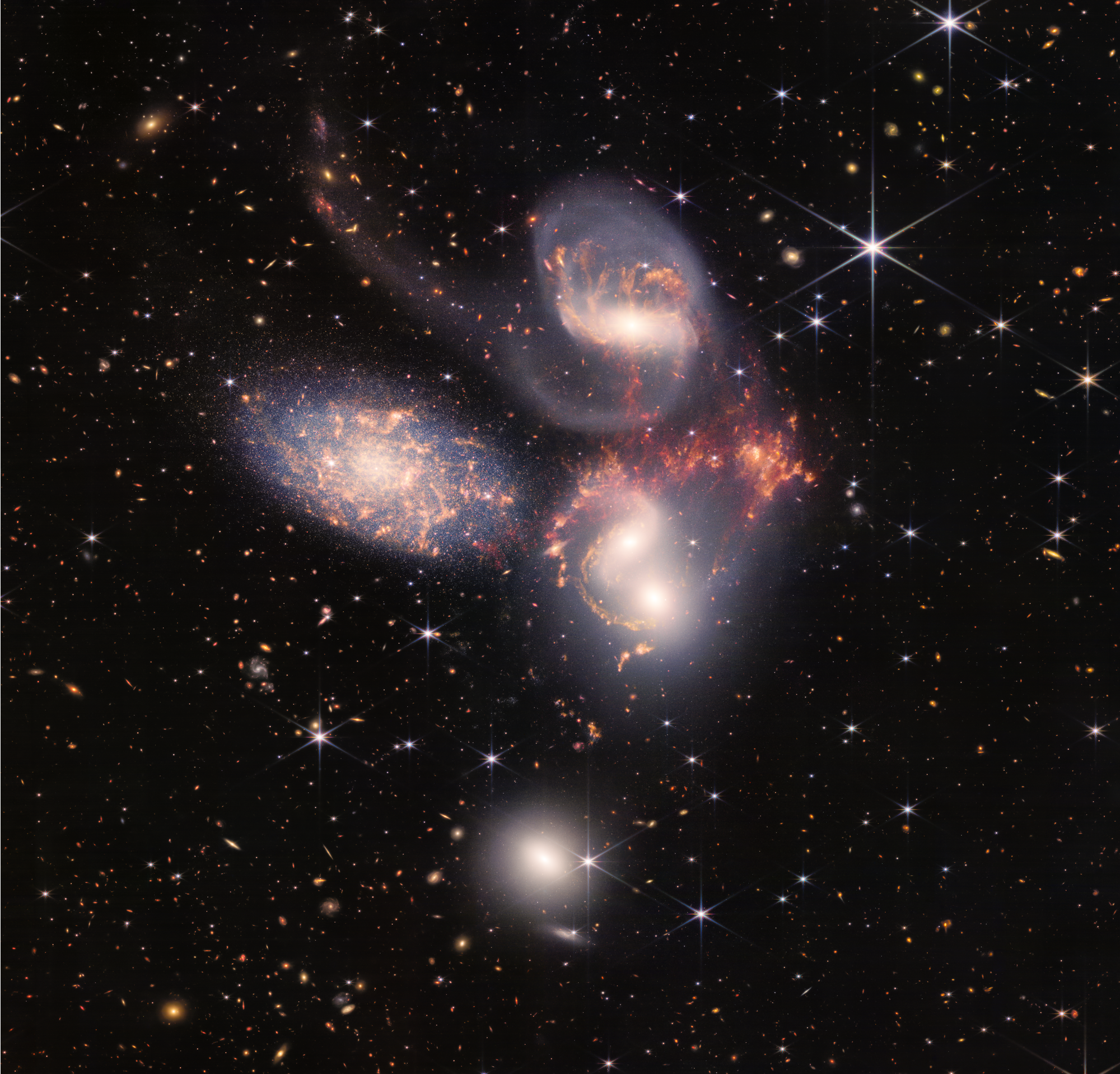
NASA’s Webb Sheds Light on Galaxy Evolution, Black Holes
In an enormous new image, NASA’s James Webb Space Telescope reveals never-before-seen details of the galaxy group called “Stephan’s Quintet.” The close proximity of this group gives astronomers a ringside seat to galactic mergers and interactions.
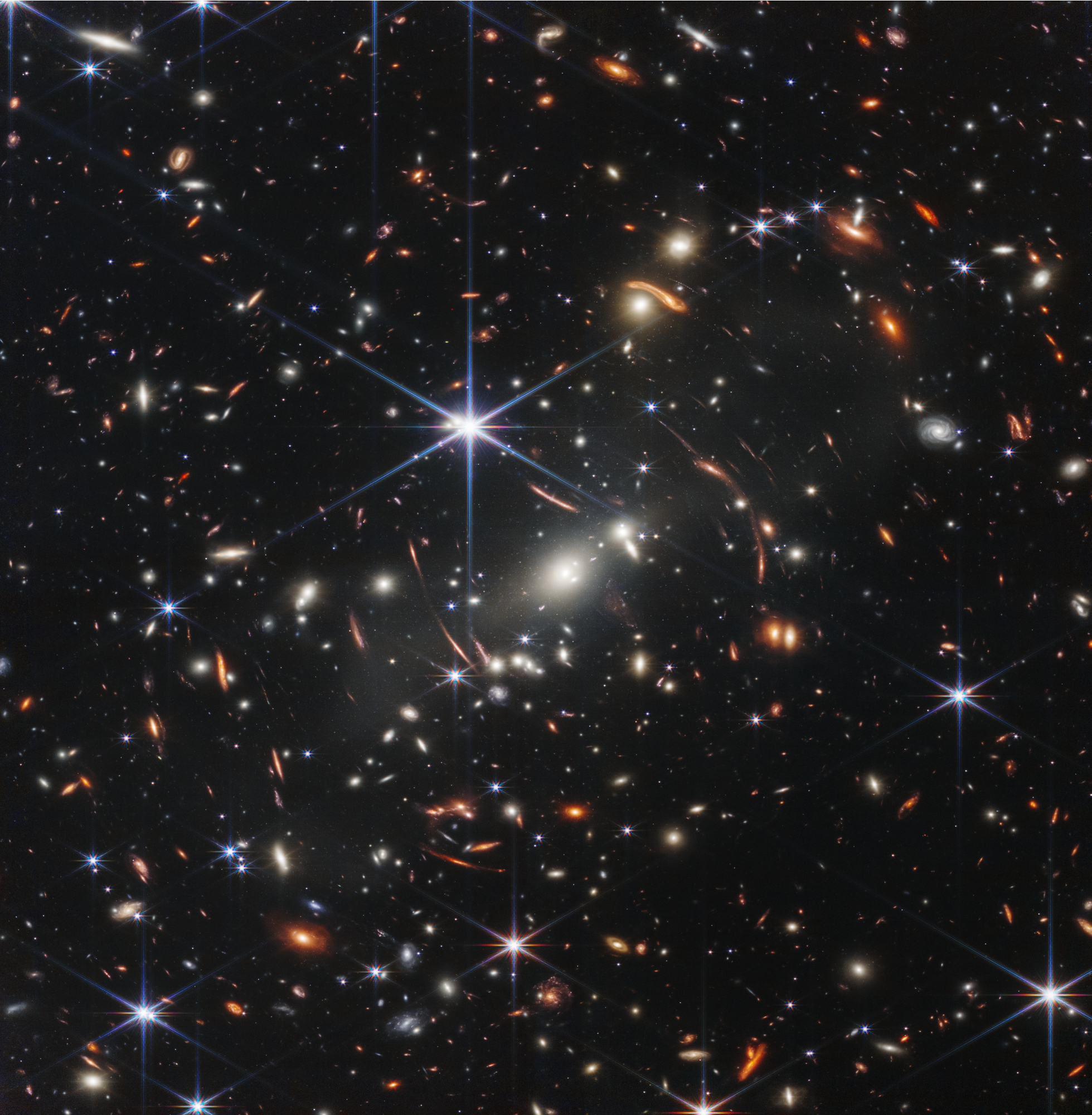
NASA’s Webb Delivers Deepest Image of Universe Yet
A flurry of bright white galaxies is stirring up this scene – captured in high resolution by NASA’s James Webb Space Telescope. Known as galaxy cluster SMACS 0723, the group of galaxies is also bending and warping the light from more distant galaxies behind them, stretching and repeating their appearances. Webb’s near- and mid-infrared imaging – and highly detailed data known as spectra – will allow future researchers to finely catalog the precise compositions of galaxies in the early universe, which may ultimately reshape our understanding of how galaxies changed and evolved over billions of years.
Capturing the onset of galaxy rotation in the early universe
As telescopes have become more advanced and powerful, astronomers have been able to detect more and more distant galaxies. These are some of the earliest galaxies to form in our universe that began to recede away from us as the universe expanded.
ALMA gets front-row seat to an ongoing star-formation standoff in the Large Magellanic Cloud
While using the Atacama Large Millimeter/submillimeter Array (ALMA) to observe large star-forming regions in the Large Magellanic Cloud (LMC), scientists discovered a turbulent push-and-pull dynamic in the star-forming region, 30 Doradus. Observations revealed that despite intense stellar feedback, gravity is shaping the molecular cloud, and against scientific odds, is driving the ongoing formation of young, massive stars. The observations were presented today in a press conference at the 240th meeting of the American Astronomical Society (AAS) in Pasadena, California, and are published in The Astrophysical Journal (ApJ).
Undergraduate Researcher Captures Young Galaxy’s “Coming of Age” and Finds Evidence That Early Galaxies May Be Bigger and More Complex Than We Thought
Scientists using the Atacama Large Millimeter/submillimeter Array (ALMA)— an international observatory co-operated by the US National Science Foundation’s National Radio Astronomy Observatory (NRAO)—have observed a significant amount of cold, neutral gas in the outer regions of the young galaxy A1689-zD1, as well as outflows of hot gas coming from the galaxy’s center. These results may shed light on a critical stage of galactic evolution for early galaxies, where young galaxies begin the transformation to be increasingly like their later, more structured cousins. The observations were presented today in a press conference at the 240th meeting of the American Astronomical Society (AAS) in Pasadena, California, and will be published in an upcoming edition of The Astrophysical Journal (ApJ).
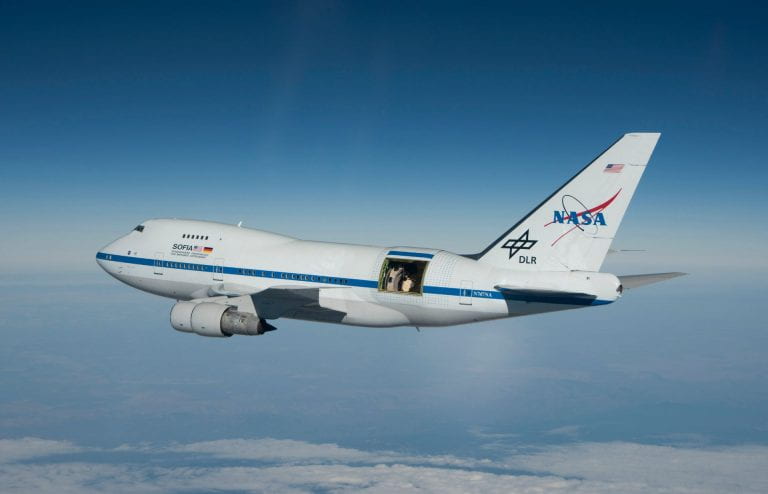
UCI-led astronomy team finds evidence of galactic metal shrouded in dust
A thorough understanding of galaxy evolution depends in part on an accurate measurement of the abundance of metals in the intergalactic medium – the space between stars – but dust can impede observations in optical wavelengths.
Scientists Find Elusive Gas From Post-starburst Galaxies Hiding in Plain Sight
Post-starburst galaxies were previously thought to scatter all of their gas and dust—the fuel required for creating new stars—in violent bursts of energy, and with extraordinary speed. Now, new data from the Atacama Large Millimeter/submillimeter Array (ALMA) reveals that these galaxies don’t scatter all of their star-forming fuel after all. Instead, after their supposed end, these dormant galaxies hold onto and compress large amounts of highly-concentrated, turbulent gas. But contrary to expectation, they’re not using it to form stars.
ALMA Scientists Uncover the Mystery of Early Massive Galaxies Running on Empty
Early massive galaxies—those that formed in the three billion years following the Big Bang—should have contained large amounts of cold hydrogen gas, the fuel required to make stars. But scientists observing the early Universe with the Atacama Large Millimeter/submillimeter Array (ALMA) and the Hubble Space Telescope have spotted something strange: half a dozen early massive galaxies that ran out of fuel.
Scientists Observe Gas Re-accretion in Dying Galaxies for the First Time
A new study from scientists using the Atacama Large Millimeter/submillimeter Array (ALMA) suggests that previously displaced gases can re-accrete onto galaxies, potentially slowing down the process of galaxy death caused by ram pressure stripping, and creating unique structures more resistant to its effects.
Mystery of Galaxy’s Missing Dark Matter Deepens
Hubble astronomers say they confirmed that an oddball
galaxy mysteriously lacks dark matter—the glue that holds stars and gas together in galaxies. This confirmation challenges the standard ideas of how researchers think galaxies work.
Cosmic cartographers map the nearby Universe revealing the diversity of star-forming galaxies
A team of astronomers using the Atacama Large Millimeter/submillimeter Array (ALMA) has completed the first census of molecular clouds in the nearby Universe. The study produced the first images of nearby galaxies with the same sharpness and quality as optical imaging and revealed that stellar nurseries do not all look and act the same. In fact, they’re as diverse as the people, homes, neighborhoods, and regions that make up our own world.
36 Dwarf Galaxies Had Simultaneous “Baby Boom” of New Stars
Three dozen dwarf galaxies far from each other had a simultaneous “baby boom” of new stars, an unexpected discovery that challenges current theories on how galaxies grow and may enhance our understanding of the universe. Galaxies more than 1 million light-years apart should have completely independent lives in terms of when they give birth to new stars. But galaxies separated by up to 13 million light-years slowed down and then simultaneously accelerated their birth rate of stars, according to a Rutgers-led study published in the Astrophysical Journal.
Successful Start of Dark Energy Spectroscopic Instrument (DESI) Follows Record-Setting Trial Run
A five-year quest to map the universe and unravel the mysteries of “dark energy” is beginning officially today, May 17, at Kitt Peak National Observatory near Tucson, Arizona. To complete its quest, the Dark Energy Spectroscopic Instrument (DESI) will capture and study the light from tens of millions of galaxies and other distant objects in the universe.
Rutgers Expert Available to Discuss Supernova Discovery
New Brunswick, N.J. (April 21, 2021) – Rutgers University–New Brunswick astrophysicist John P. (Jack) Hughes is available for interviews on a supernova (exploding star) discovery published today in the journal Nature. The discovery, made with NASA’s Chandra X-ray Observatory, features…
Multi-wavelength Observations Reveal Impact of Black Hole on M87 Galaxy
A multiwavelength campaign of observations gave astronomers a “big picture” view of the region near the galaxy M87’s supermassive black hole and also the distant regions it affects.
Mapping the Universe with eBOSS: Will Percival live webcast
Watch the live webcast on this page on Wednesday, April 7 at 7 pm ET.
New Images Reveal Magnetic Structures Near Supermassive Black Hole
The Event Horizon Telescope (EHT) has produced a new image showing details of the magnetic fields in the region closest to the supermassive black hole at the core of the galaxy M87, providing clues about how its powerful jets are produced.
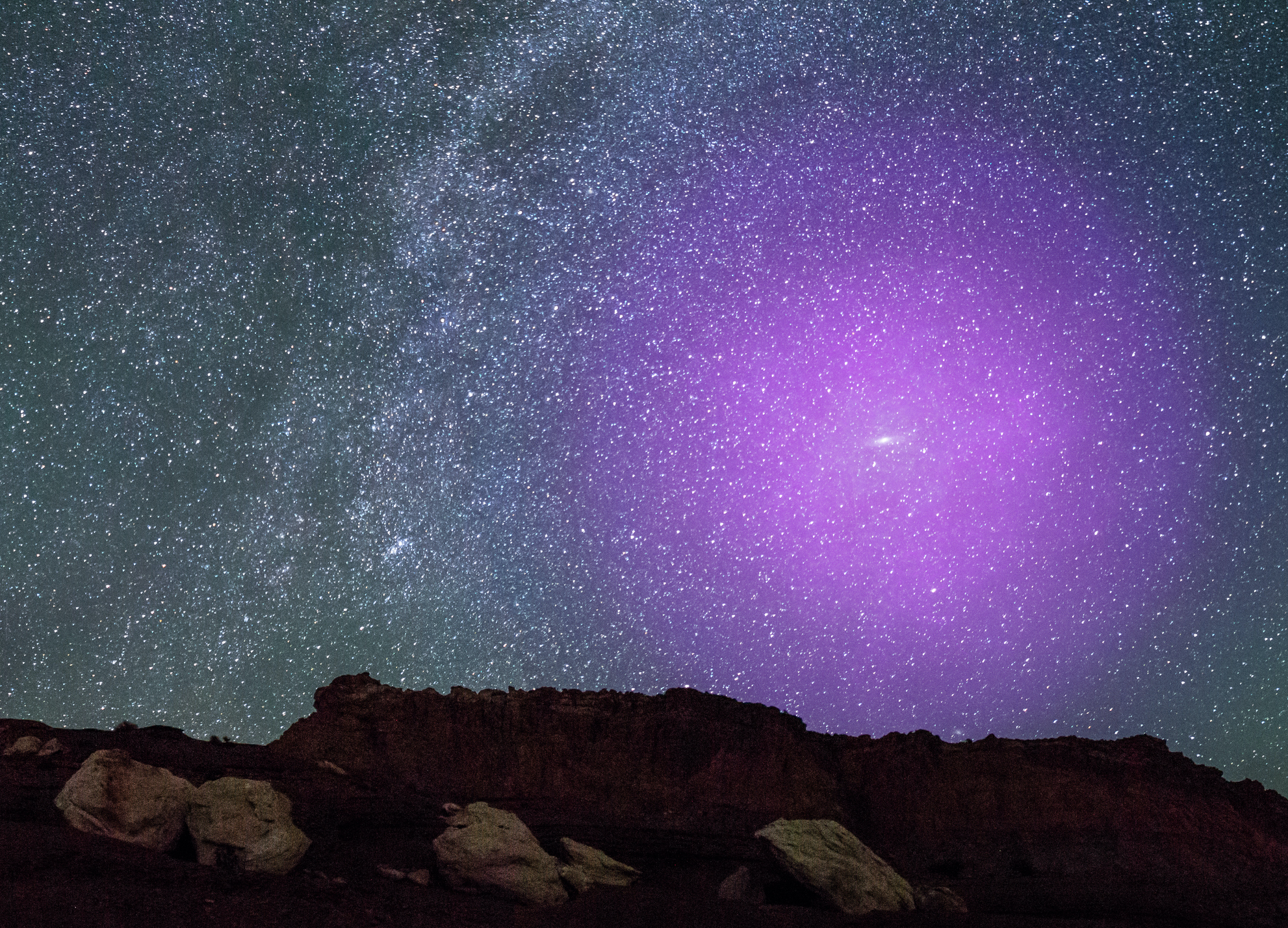
Missing Baryons Found in Far-Out Reaches of Galactic Halos
Researchers have channeled the universe’s earliest light – a relic of the universe’s formation known as the cosmic microwave background – to solve a missing-matter mystery and learn new things about galaxy formation. Their work could also help us to better understand dark energy and test Einstein’s theory of general relativity by providing new details about the rate at which galaxies are moving toward us or away from us.
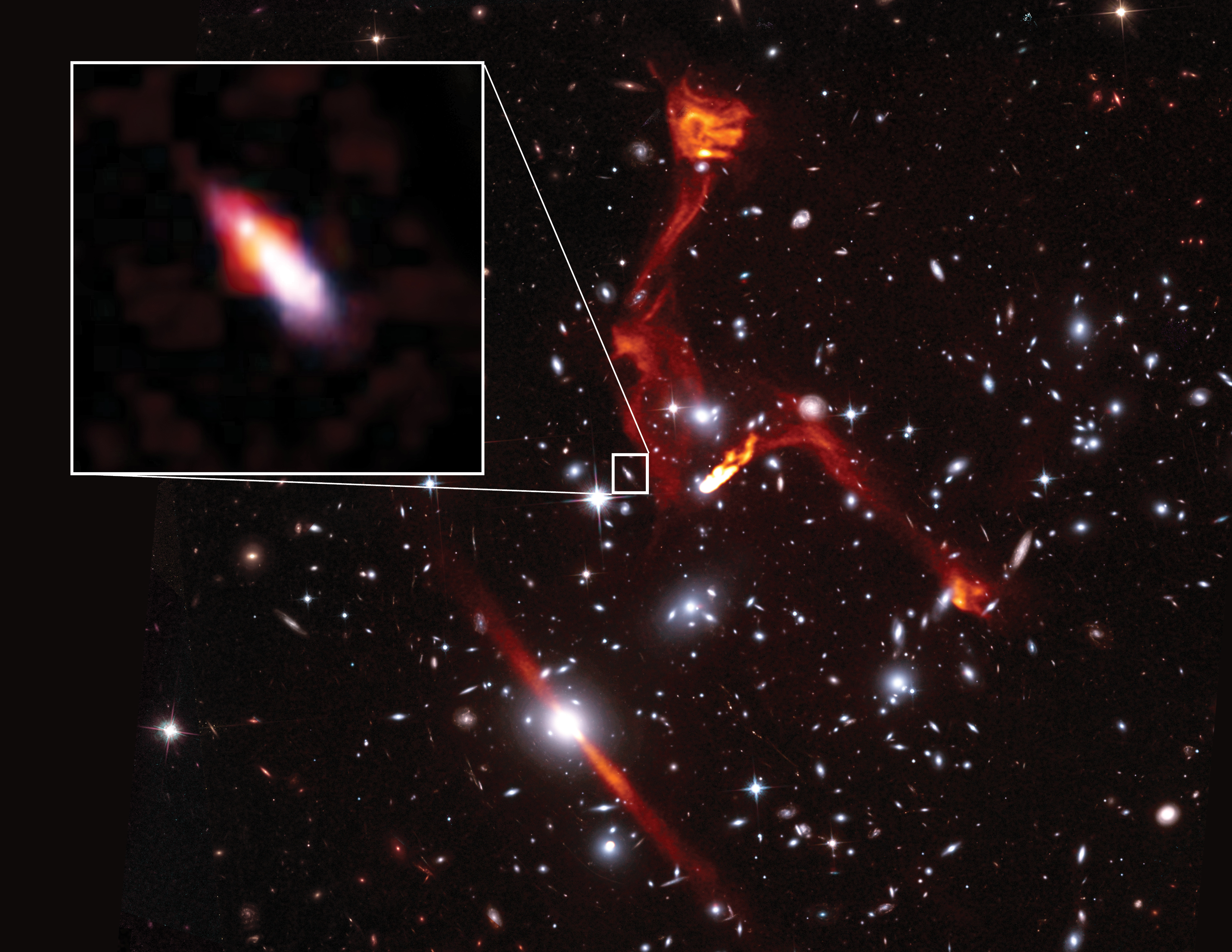
IMAGE RELEASE: Cosmic Lens Reveals Faint Radio Galaxy
Astronomers using the VLA took advantage of the gravitational lensing provided by a distant cluster of galaxies to detect an even more-distant galaxy that probably is the faintest radio-emitting object ever found.
Rutgers Expert Available to Discuss James Webb Space Telescope Science
New Brunswick, N.J. (Feb. 22, 2021) – Rutgers University–New Brunswick Professor Kristen McQuinn is available for interviews on the upcoming launch of the James Webb Space Telescope, its potential scientific impact and the leap forward it will provide in our understanding of the…

Featured Video: Rotating Galaxy Disks in the Early Universe
Host Melissa Hoffman of the National Radio Astronomy Observatory talks about how ALMA discovered a young galaxy and what it tells us about our own Milky Way.”
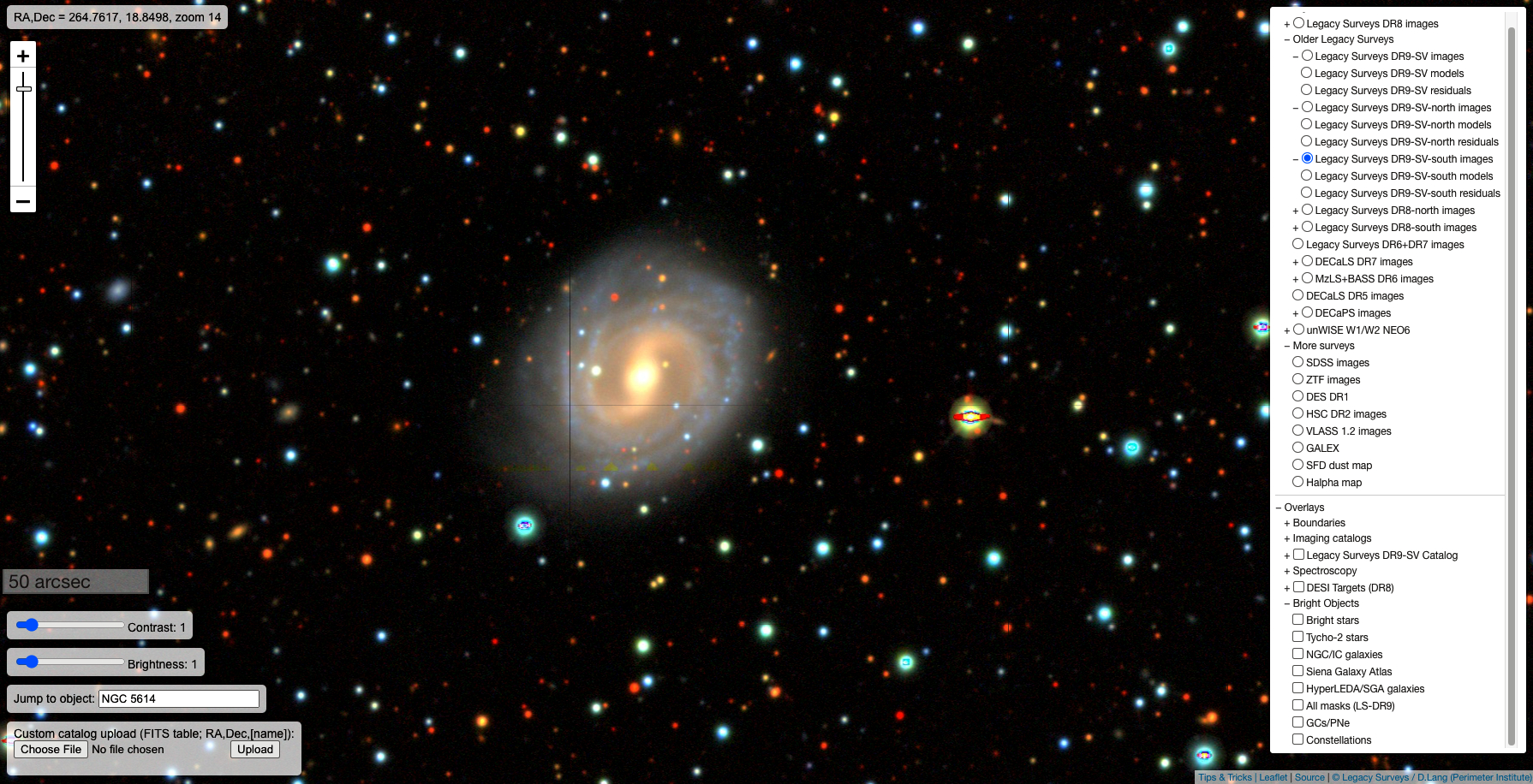
Building a Giant 2D Map of the Universe to Prepare for the Largest 3D Map
Before DESI, the Dark Energy Spectroscopic Instrument, can begin its 5-year mission from an Arizona mountaintop to produce the largest 3D sky map yet, researchers first needed an even bigger 2D map of the universe.
Quasar Discovery Sets New Distance Record
Astronomers have discovered the most distant quasar yet found. The quasar is seen as it was only 670 million years after the Big Bang, and is providing valuable clues about how huge black holes and their host galaxies formed in the early Universe.
VLA Sky Survey Reveals Newborn Jets in Distant Galaxies
Comparing data from VLA sky surveys made some two decades apart revealed that the black hole-powered “engines” at the cores of some distant galaxies have launched new, superfast jets of material during the interval between the surveys.